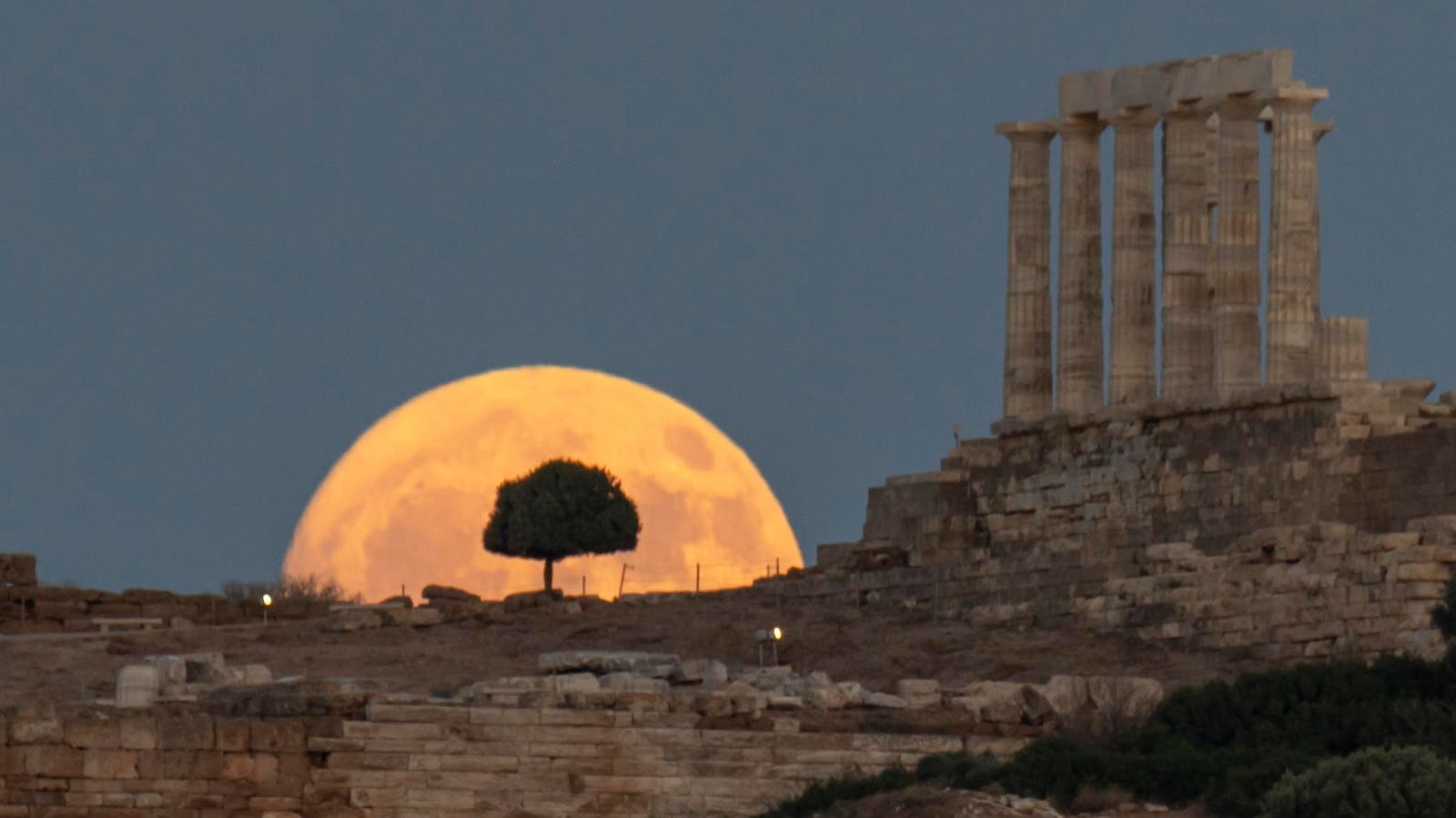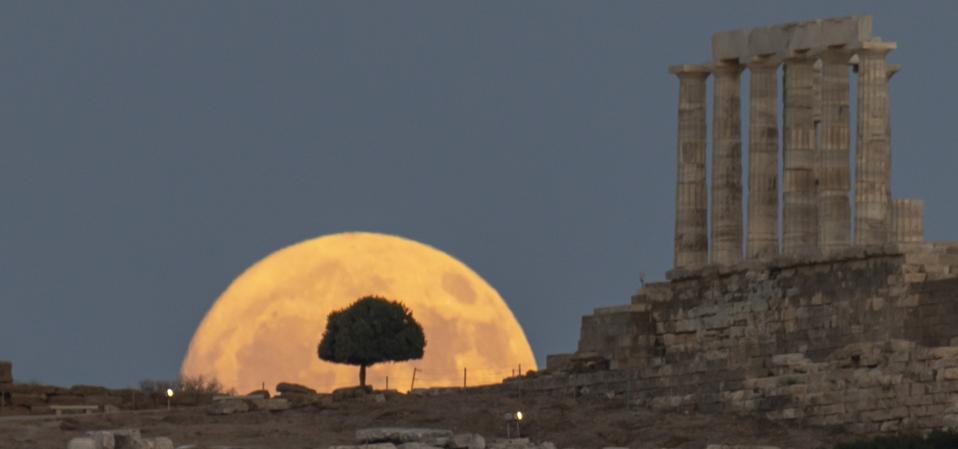The Full Buck Moon rises behind the ancient Greek Temple of Poseidon on Cape Sounion in Greece on … More
The full buck moon that rises tonight, Thursday, July 10, will be just like every other full moon in lots of ways, but it will also be unique. From its name to its color to its path through the sky and much more, here are seven things to know about the full buck moon — including when to see it rise.
1. It’s The First Full Moon Of Summer
There are two dates for the start of summer in the Northern Hemisphere. Meteorological summer begins on June 1, while astronomical summer — which is the more precise — begins on the solstice, which occurs on June 20 in North America. The last full moon — the strawberry moon — occurred on June 10, making July 10’s buck moon the first of summer.
2. It Will Rise Opposite Mars
The full moon rises in the east soon after the sun sets in the west. This month, the sun sets a little earlier, just enough to have Mars opposite the full buck moon as it rises. The red planet will set very soon after.
3. It Has Many Names
Although July’s full moon is often referred to as the buck moon because July is the month when new antlers appear on a deer buck’s forehead, there are many other names. According to Timeanddate.com, these include the salmon moon, raspberry moon, and thunder moon (Native American), as well as the calming moon, wyrt moon, herb moon, and mead moon (Celtic), and hay moon (Anglo-Saxon).
4. It’s One Of The Lowest Full Moons
Its closeness to the date of the June solstice also makes the buck moon one of the lowest full moons of the year. With the sun at its highest at the solstice, the full moon is at its lowest because they’re opposites, so they mirror each other’s position as seen from Earth.
5. It Will Look Larger Than It Is
When the Buck Moon is close to the horizon, it will appear to be much larger than when it’s higher in the sky. It’s an optical illusion called the “moon illusion” that’s caused by the way our brains perceive the moon against foreground objects, according to NASA.
6. There’s A Very Specific Time To See It
The time of the full moon — 4:38 p.m. EDT on Thursday, July 10 — is irrelevant. Moonrise where you are is the time to see the full moon. Be outside at that time, and you’ll see the buck moon at its best. In North America, moonrise occurs about 25 minutes after sunset.
7. It Will Look Orange As It Rises
If there’s a clear eastern horizon at the time of moonrise, prepare for the awesome sigh of an orange buck moon. The color is down to something called Rayleigh scattering — the same physics that explains why a sunset looks orange. Since you’re watching the moon rise on the horizon, you’re looking along Earth’s surface, where the atmosphere is thickest. Orange light more easily travels through the mess of particles in Earth’s atmosphere without scattering off them because it has longer wavelengths.
For exact timings, use a sunrise and sunset calculator for where you are, Stellarium Web for a sky chart and Night Sky Tonight: Visible Planets at Your Location for positions and rise/set times for planets.
Wishing you clear skies and wide eyes.









